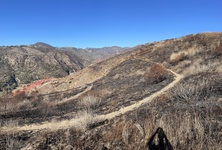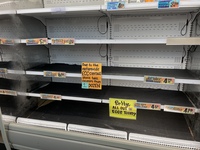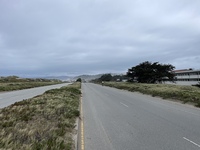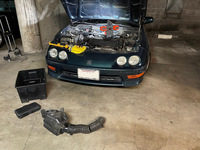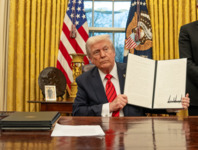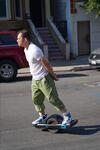 |
| Angelika/Mike Schilli |
|
Michael Whenever I drive through Germany on vacation, I immediately switch to Defcon One, because it's important to spot all those speed traps in time. Often, an inconspicuous village in the middle of nowhere has installed a stationary camera to cash in on us tourists, and cities like Munich or Augsburg are practically plastered with speed cameras. Not to mention the mobile units that set up speed traps in the most unlikely places.
I never would have thought that such surveillance state methods would take hold here in San Francisco. But our Governor Gavin Newsom signed Assembly Bill No. 645 in 2023, which layed the legal groundwork for the speed cameras. As is well known, the wheels of our city administration turn at a snail’s pace, but by March 2025, all 33 cameras of the "pilot project" had been installed in San Francisco. The mayor and city council inaugurated them with great fanfare under the motto "Speed Safety." So far, only a few of the cameras have been activated, and even those are currently only sending warning notices without fines by mail to drivers. The website of the responsible agency SFMTA shows the current status of all 33 installed traps (Figure 3).
To prevent any caught driver from getting the idea to sue the city, there are large signs a few feet before the cameras indicating the permitted maximum speed and the note "Photo Enforced" (Illustration 4).
The whole setup, of course, has the catch that speeding criminals with stolen cars won't ever pay any fines. And, typical for San Francisco, a two-tier legal system applies: average earners are punished twice as harshly as poor people, because speeding low-income earners officially receive a 50% discount (Figure 5).
From the table in Figure 5, you can see that the grading was obviously determined by someone who has never driven a car before. The fine for a kamikaze speeder who races through the city at over 100 mph (160 km/h) is only $500, or just $250 for those with low income! As mentioned, no fines have been issued yet.
According to a study by the city's transportation authority SFMTA (San Francisco Municipal Transportation Agency), 42,210 drivers per day exceeded the permitted maximum speed by more than 11 miles per hour, and another 7,000 were caught driving 16 to 25 miles per hour over the limit. And apparently, they only took measurements at one of all 33 camera locations! Now, the laws of the state of California require that the authority cannot automatically send out fines. Each ticket must be manually reviewed by an employee. With two minutes of review time per ticket, that would provide bread and work for about 200 new city employees. And the city urgently needs an economic miracle!
Unlike speed cameras in Germany, the new cameras in San Francisco do not identify the driver but only the license plate of the speeding vehicle. The ticket is then sent to the vehicle's DMV registered owner. If the owner then feels they are not responsible, they can file a written objection and name the actual driver. This seems legally shaky to me, but it is supposedly permissible since it only involves civil law violations. The caught speeders will pay fines to the city, but won't receive any points on their record. Additionally, nothing is reported to the vehicle owner's insurance, unlike with police-issued fines.





